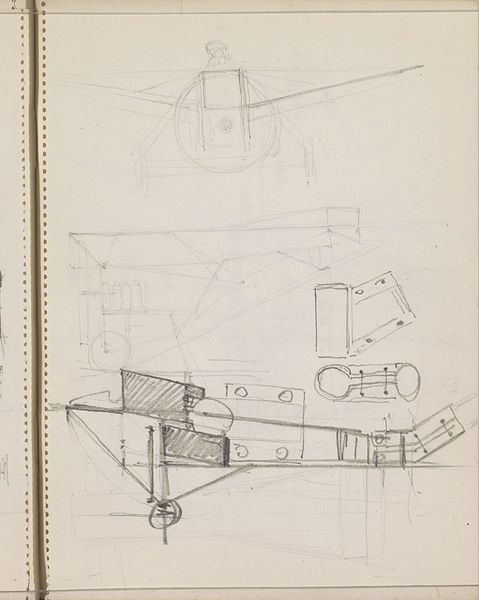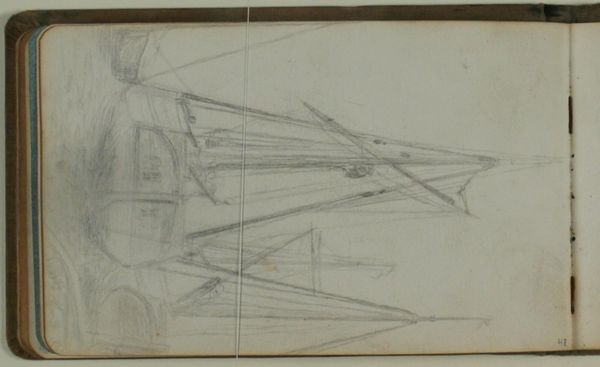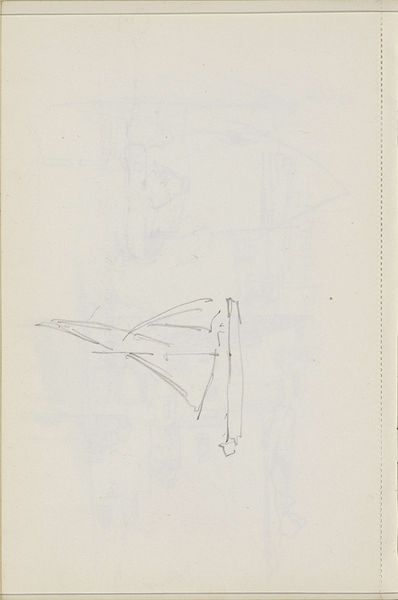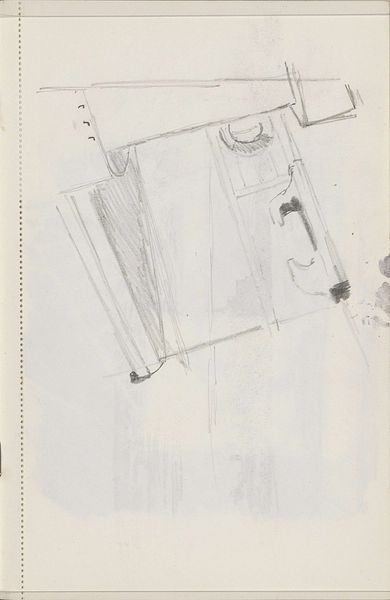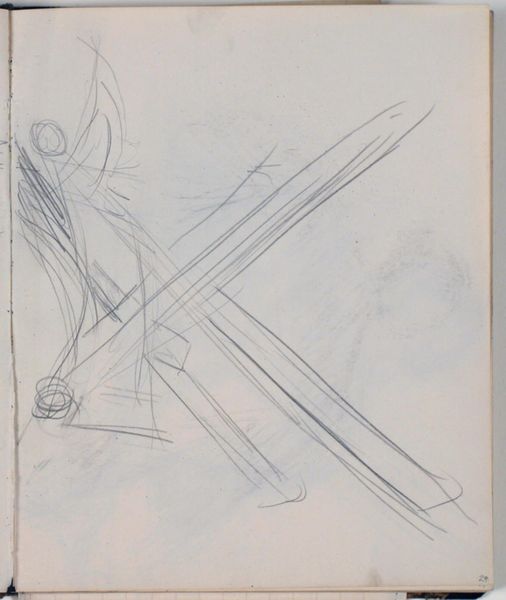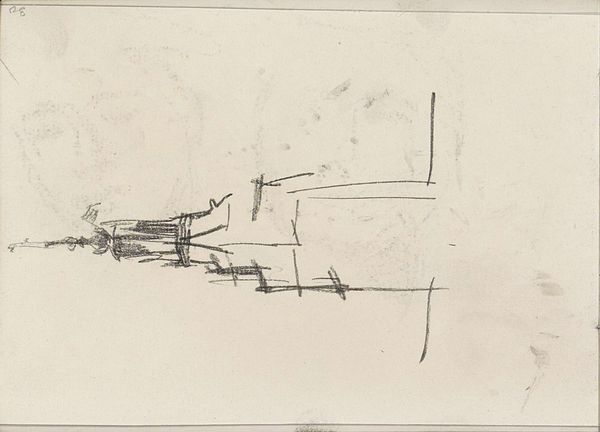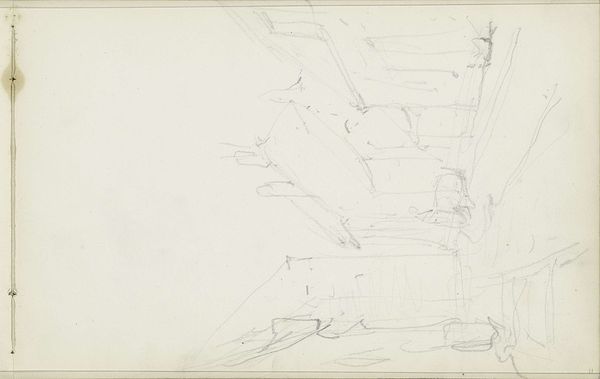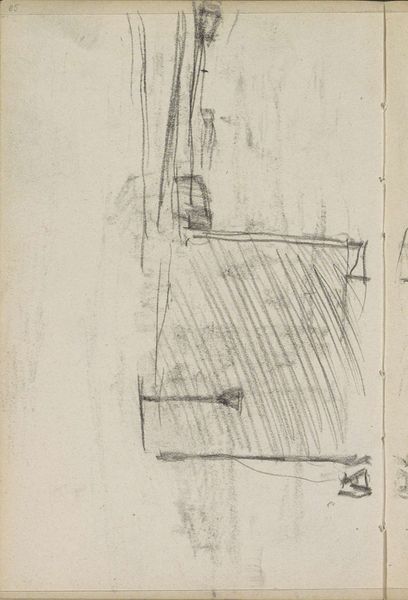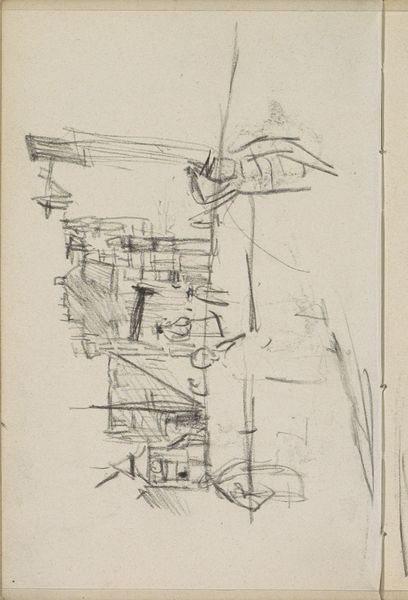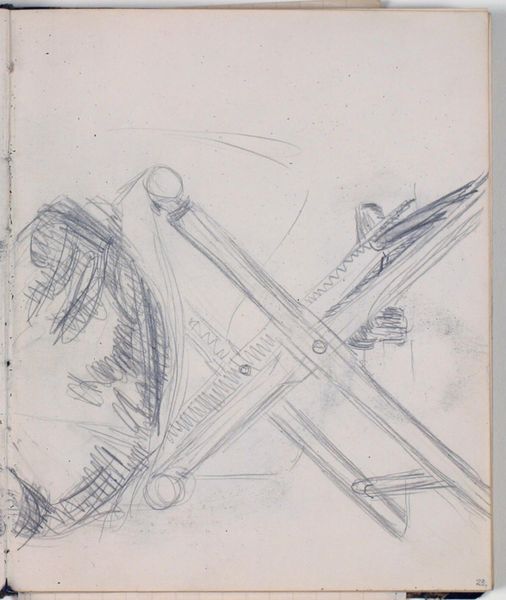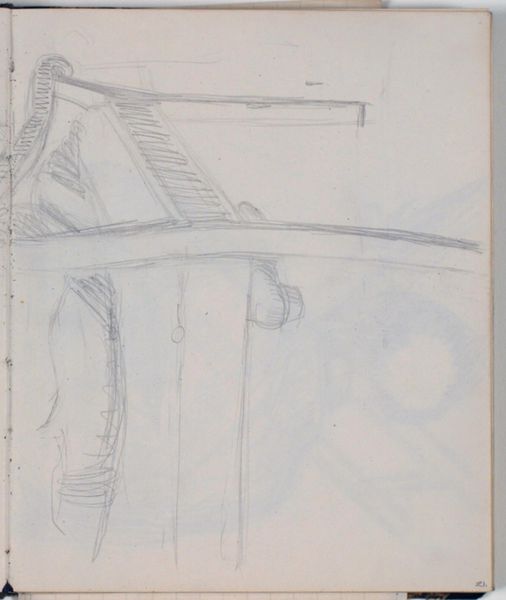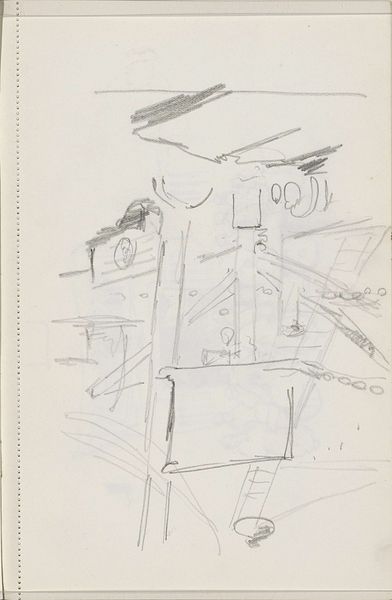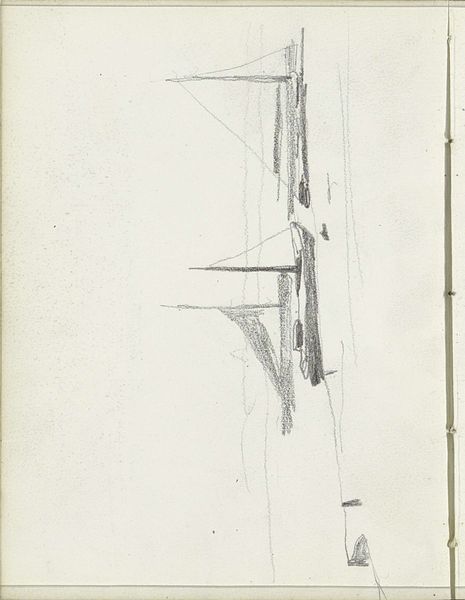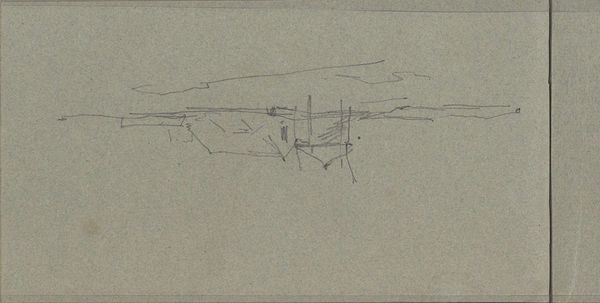
drawing, paper, pencil
#
pencil drawn
#
drawing
#
pencil sketch
#
etching
#
paper
#
form
#
geometric
#
pencil
#
pencil work
Copyright: Rijks Museum: Open Domain
Curator: I’m struck by the fragility of this image—like catching a dream on paper. Editor: Exactly! We’re looking at "Zweefvliegtuig", which translates to Glider, an etching done sometime between 1906 and 1945. It’s part of the Rijksmuseum's collection. You know, it’s a simple pencil sketch, yet it manages to capture the excitement of early aviation. Curator: It does. The choice of pencil, of course, places the emphasis squarely on process. What kind of paper was available, the consistency of the pencils used... these were defining constraints on representation. Were there different types of erasers or methods for refining? This all points to a distinct set of historical conditions for image-making. Editor: I agree. It feels provisional, like a first draft bubbling with invention and also a sort of vulnerability that accompanies trying to put something complicated in motion. Look at the tentative lines! Like the artist is discovering the form in real time, and there's something incredibly endearing about seeing the gears turning on paper, or in the air... Curator: It reminds us of the often-overlooked labor involved in the production of artistic knowledge. These sketches become evidence, testaments to iterative design practices often missing from formal portraits of genius. Plus the ready availability and relatively low cost of pencil and paper speak to the democratization of drawing as a technical practice for all strata of society, something usually left out when thinking about art history as it connects to consumer culture. Editor: Mmhmm. And you also sense how drawing, the act itself, becomes this space for both technical calculations and letting your imagination loose. The geometric forms do suggest calculation, but the lightness of the lines also suggest something about weightlessness and dreaming of the impossible, like drawing could set the aircraft aloft, into air… Curator: I love that! Thinking about the historical context here, you know, early aviation was hugely reliant on not just scientific advancements but also on a massive industrial complex supplying parts, textiles, fuel... This simple pencil drawing acts almost like an ideological counterpoint, scaling down all that monumental effort into the hands of a single draughtsman or maybe engineer. Editor: Well, it's been fascinating looking at how a seemingly modest drawing offers a launchpad for thinking about history, process, labor, dreams! Curator: Indeed! An elegant illustration of art's relationship to industrial transformation.
Comments
No comments
Be the first to comment and join the conversation on the ultimate creative platform.
